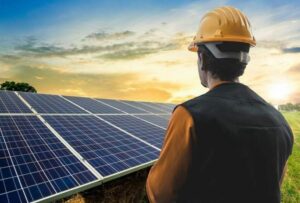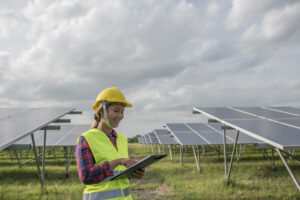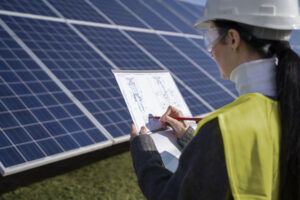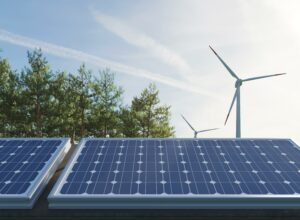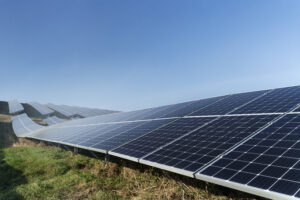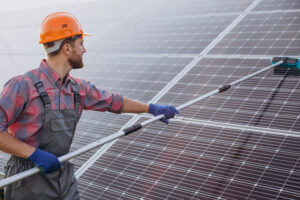India has traveled far in adopting solar power with the pursuit of a greener future. Yet as urbanization takes a toll and rooftops become a commodity in high demand, a new and radical answer is on the rise: Building-Integrated Photovoltaics (BIPV). Building innovation and energy generation meet in BIPV, not just a solar panel stuck to a rooftop.
In comparison with traditional solar systems that are placed on building tops, BIPV technology is integrated into the building elements (roofs, facades, skylights, and even windows) such that the whole building can be a power generator. BIPV is not a simple upgrade to the already congested cities of India and design-oriented commercial centers; it is a game changer.
Beyond the Rooftop
As of April 30, India has installed rooftop solar capacity of more than 17 GW, an encouraging milestone. But taking it too many times at this scale in space-starved cities is a severe challenge. Conventional rooftop solar needs a large, shadow-free surface area. That’s a luxury that many apartment complexes, commercial towers, and vertical cities just can’t afford.
This is where BIPV takes pride of place, literally. It converts unused vertical spaces, such as facades and glass panels, into productive resources. Solar panels are no longer confined to flat roofs. Walls, atriums, canopies, and even balconies now can be used to generate power, making buildings solar assets instead of passive energy consumers.
Why BIPV Is the Future of Urban Solar
Understand why BIPV isn’t merely a technological revolution, it’s a strategic imperative:
Effective Land Use
In a nation where each square foot matters, particularly in metros such as Mumbai, Delhi, or Kochi, BIPV provides a sophisticated solution. It utilizes vertical and sloping surfaces already available in the building structure, using zero additional land area.
Energy Self-Sufficiency
With BIPV, electricity is produced locally. This decentralization mitigates reliance on the grid, keeps supply stable during grid outages, and facilitates energy resilience in residential and commercial buildings.
Sustainable Architecture
BIPV erases the distinction between aesthetics and sustainability. Developers and architects can now create aesthetically pleasing facades that produce electricity, adding to green building scores and sustainable urban development.
Cost Savings Over Time
Though the initial investment is greater than in traditional rooftop installations, BIPV substitutes current building material, such as glass or tiles, so it is a twin-purpose investment. In the long run, it means reduced electricity bills and a faster return on investment.
Improved Energy Efficiency
Several BIPV systems are structured with rear venting, optimal orientations, and shading controls, adding even more energy output and lowering building heat loads—a distinct benefit in India’s climate.
Where Is BIPV Already Making an Impact?
BIPV is no longer merely a theoretical concept—it’s already changing actual infrastructure:
CtrlS Datacenters, Navi Mumbai: An 863-kWp BIPV system was incorporated into the building facade, demonstrating large-scale commercial feasibility.
Renewable Energy Museum, Kolkata: A dome-shaped solar structure showcases the applications of BIPV in public institutions and education.
Sahibabad & Vijayawada Railway Stations: Indian Railways commissioned BIPV platforms, with Sahibabad hosting a 729-kW facility.
Indian Railways + Central Electronics Limited: A first of its kind with India’s first solar BIPV platform merging heritage structures with green tech.
These examples are a turning point. BIPV is not only about producing energy but also about integrating sustainability into the design language of our private and public environments.
What’s Holding It Back?
Even with its promise, BIPV adoption remains stalled on several important barriers:
High Initial Costs
BIPV technology is more intricate and generally costlier owing to the requirements of customization and specific material usage. But these are coming down with larger production scale and technological advancements.
Policy & Incentives Gap
BIPV, unlike solar on rooftops, does not yet have broad-based policy support or subsidies in India. Special programs, tax breaks, and expedited clearances are required to drive its integration into urban planning regulations and green building standards.
The Market Outlook
The market continues to grow rapidly despite all these challenges. The BIPV market in India is anticipated to reach USD 8.7 billion by 2033, as per the IMARC Group. As global concerns for climate and increasing energy demands grow, this growth is not only probable but also unavoidable.
As urban areas go vertical and green, and as Net Zero Building (NZB) requirements take effect, BIPV is set to become an integral part of modern building practices. It’s not only the intelligent thing to do; it’s a necessary tactic for green city planning.
GSL Energy’s Role in the BIPV Future
GSL Energy Solutions, being the most reliable solar firm in Kerala, is immensely interested in next-generation solar technology such as BIPV. Whether it is assessing the prospects of your building or designing smooth integrations, our team will add expertise, trustworthiness, and technology-backed knowledge to the discussion.
Our commitment goes beyond installation—we provide ongoing support and real-time performance monitoring and ensure every solar element installed is optimized for peak output and long-term durability.
With Kerala rapidly urbanizing, BIPV is to be the key to changing the way we conceptualize energy, design, and functionality. Be a builder, architect, or resident; it’s time to rethink your building as a clean energy asset, and we’re the ones to make it happen.

